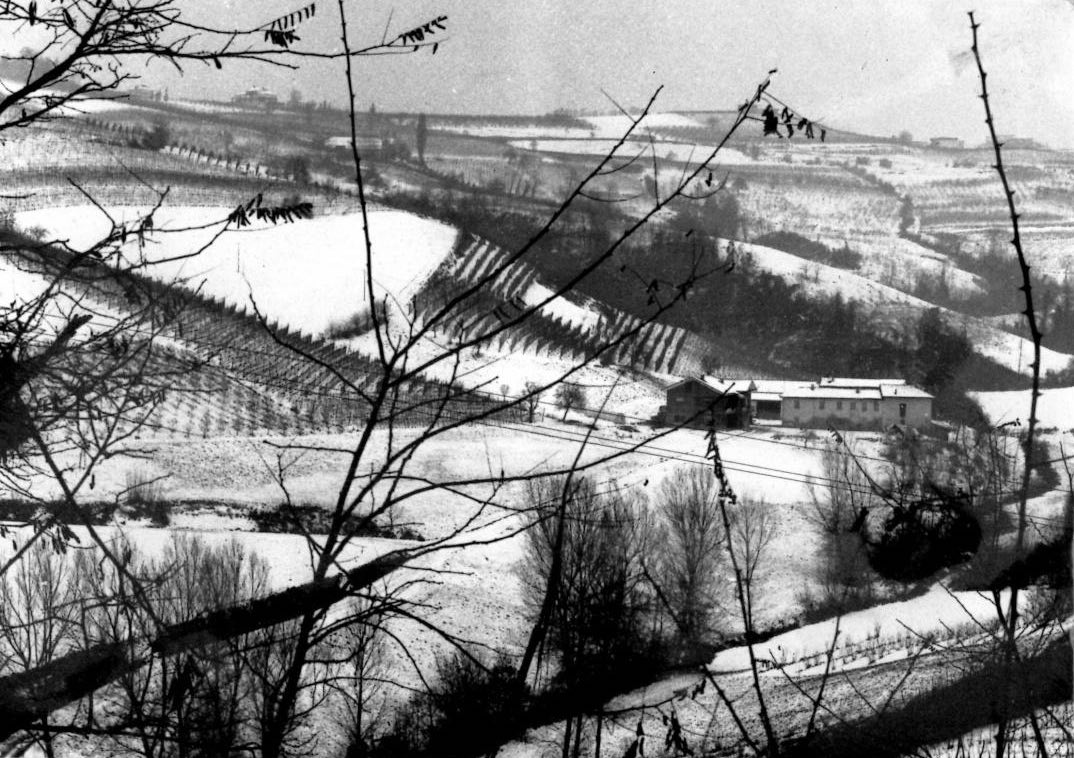Historia
For four generations Ca’ del Baio has been a family affair, as is the tradition in the Langhe. Nurtured and passed down from father to son, the vineyards surrounding the Grasso family farmhouse have been added to over time through marriage and acquisitions.
Today it is Giulio and Luciana who, together with their daughters Paola, Valentina and Federica, handle all the various areas of the business with passion and expertise, from the growing and vinification of the grapes, to hospitality and wine sales.
For the Grasso family, simplicity, a sense of sacrifice and the deep attachment they have to their land are pre-requisites for guaranteeing wines of quality.
Today the Ca’ del Baio estate takes in 28 hectares of vineyards in the villages of Barbaresco and Treiso, both of which are in the Barbaresco winegrowing area.
All estate-grown, their wines are made from a range of highly valued varieties, some typical of the area while others are more international: the whites include Moscato, Chardonnay and Riesling, and the reds Nebbiolo, Barbera and Dolcetto. Almost all the wines are varietals.
The most prestigious vines – producing the Nebbiolo used to make Barbaresco – are between 25 and 40 years old, and they go into making the estate’s crus of Asili and Pora (commune of Barbaresco) and Vallegrande and Marcarini (Treiso).
Over the course of the years Ca’ del Baio has acquired a prominent position in the world of Barbaresco, one of the most widely-appreciated and high profile Italian red wines, competing on international markets in Europe and throughout the world.
HISTORY
We tell our story through some dates which we consider to be key milestones in the development of our family and our winery.
1870
Giuseppe Grasso, great-grandfather of current owner Giulio Grasso, moves with his four children from Calosso – in the province of Asti – to Treiso di Barbaresco, where he purchases the Cascina Vallegranda farmhouse and land.
This is also the year of the “Breach of Porta Pia”, when Rome is captured by the Italians, leading to its becoming the capital of Italy the following year.
 1921
1921
Luigi Grasso – Giuseppe’s eldest son, known as “Vigin” – plants the first grafted vines on his farm in Treiso with the blessing of his wife Maria Teresa. Three years later, he was to harvest the first bunches of grapes to make a little wine for his family and to sell on site.
1922
After three daughters, the last-born to the Grasso household in Cascina Vallegranda is a son, Ernesto.
The Great War has recently ended, and – as in the rest of Italy – the vignerons in the Langhe are once more demanding a law to regulate the quality and origin of wines. It would arrive finally in 1924, with a Royal Decree recognizing Traditional Fine Wines.

1955
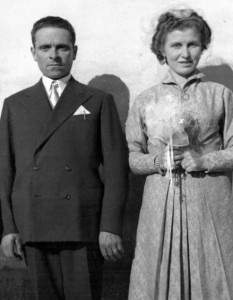 Ernesto Grasso marries Fiorentina (“Fiorina” to her friends).
Ernesto Grasso marries Fiorentina (“Fiorina” to her friends).
She hails from the Asili district of Barbaresco, where her family owns some land on the historic Asili and Pora crus.
For Barbaresco, Treiso and their hills 1955 is a difficult year.
In the middle of the summer a violent hailstorm destroys the harvest, and in the same year nearly 400 people leave Barbaresco.
Two years later, in 1957, Treiso gains administrative independence.
But for the Grasso family, with vineyards in both villages, the ties between the municipalities of Treiso and Barbaresco remain.
1959
An all-important year for the Grasso household: “Fiorina” gives birth to Giulio, Ca’ del Baio’s present-day owner.
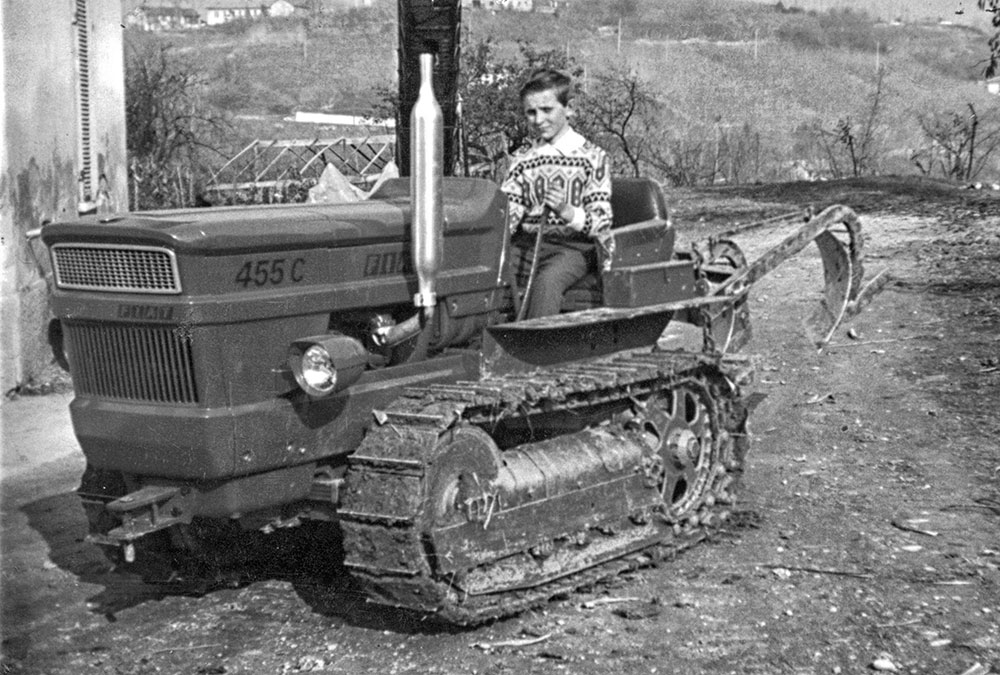
1965
The grapes grown in Vallegrande – destined to become one of Barbaresco’s Additional Geographical Indications – are vinified separately for the first time by Ernesto.
Denomination of Origin status had been introduced a couple of years earlier in 1963 by Law 930, and the following year, on 23 April 1966, Barbaresco would become a Controlled Denomination of Origin wine, the first step on the way to the resurgence of the whole area.
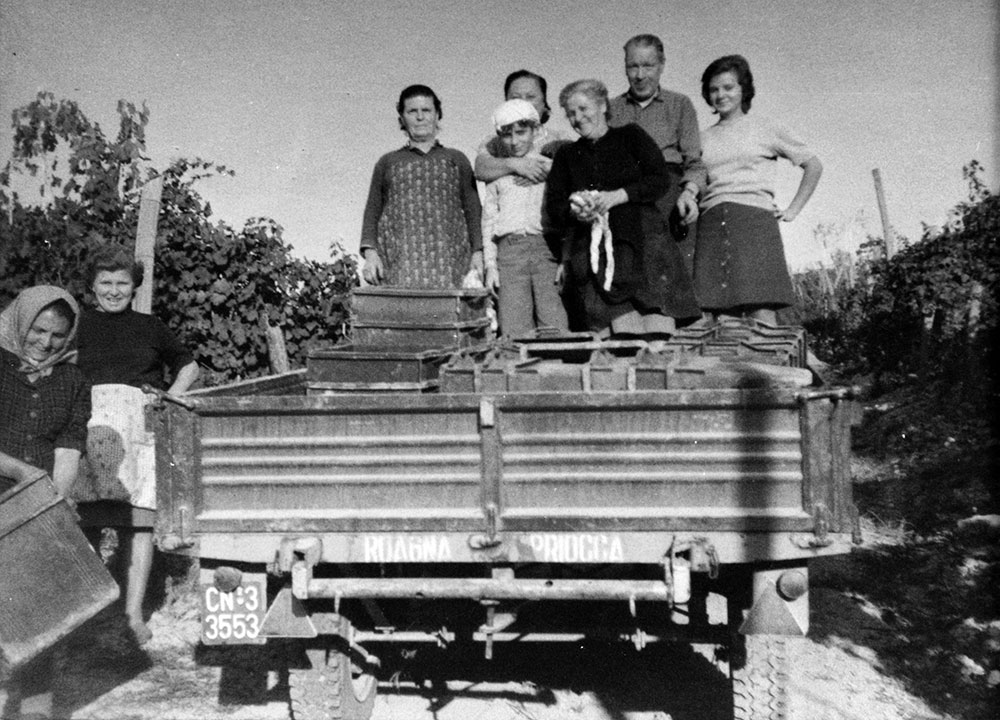
1982
 Giulio Grasso marries Luciana. Just like Giulio’s mother, “Fiorina”, she comes from Barbaresco. With this union the Grasso household is given a new lease of life, and the family ties linking Treiso and Barbaresco are made even stronger.
Giulio Grasso marries Luciana. Just like Giulio’s mother, “Fiorina”, she comes from Barbaresco. With this union the Grasso household is given a new lease of life, and the family ties linking Treiso and Barbaresco are made even stronger.
The marriage is blessed by nature too: the vineyards, and their soils, skies and Nebbiolo vines deliver one of Barbaresco’s great vintages.
Encouraged by the older generation, Giulio and Luciana begin to look together to the future: selecting new land to purchase, growing grapes from other sources and vinifying them separately to check out their potential, and focusing on ever higher quality.
1988
This is a strategic step along the winery’s journey: for the first time, the grapes grown in the Asili district of Barbaresco are vinified separately. Up until the year before, they had been delivered in part to the Produttori del Barbaresco cooperative of which Fiorina’s mother was a member
2004
Ca’ del Baio continues its policy of selecting the finest vineyards for the production of Barbaresco, vinifying the Pora cru separately for the first time.
2008
A momentous year for a winery like Ca’ del Baio, which has always prioritized red wine varieties: with the backing of his family, Giulio Grasso plants the first vineyard with the Rhine Riesling variety. The aim is to produce an elegant white wine with a strong personality.
2016
This time there are two pieces of good news for Ca’ del Baio: Barbaresco Docg Asili Riserva is released onto the market for the first time with the 2011 vintage, and in the same year Giulio Grasso is named “Viticulturist of the Year” by the Gambero Rosso Italian Wine Guide.
Giulio dedicates this prestigious award to his recently deceased father, Ernesto: a good, wise man, whose attention to detail and expert knowledge of the rules of vinegrowing and the business had made him the true custodian of the winery’s history.
2016 is also an important year for the world of Barbaresco as a whole, because it marks fifty years since the awarding of Denomination of Origin status.
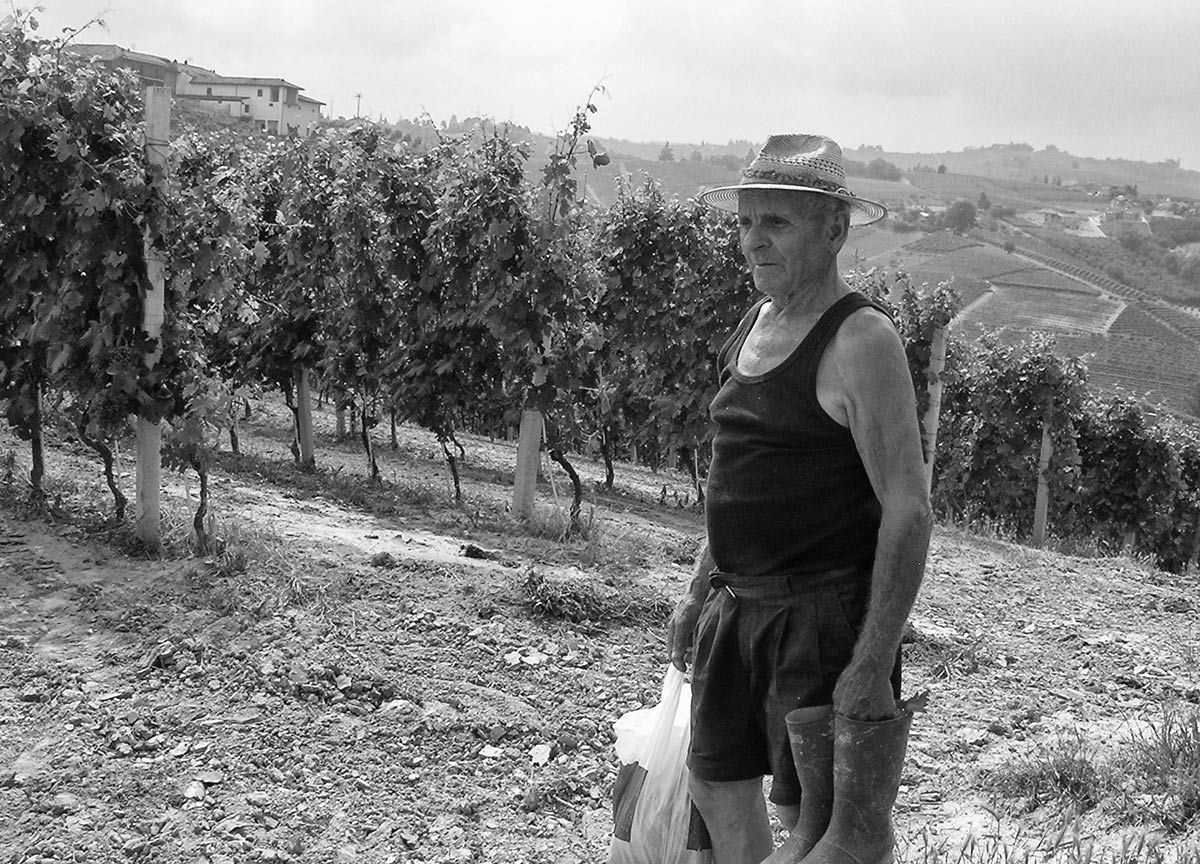
Grandfather Ernesto in Vigna Asili – July 2012
Source: https://www.cadelbaio.com/en
